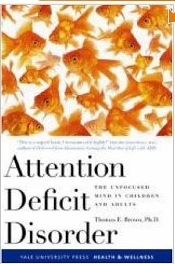I love to read about ADHD in the news when the authors are actually interested in some new twist in the reporting.Check out “New World Disorder: Was ADHD an evolutionary asset?” by William Saletan (Posted Thursday, June 12, 2008, at 12:52 PM ET) in Slate.com. He said in part:
The study, led by Dan Eisenberg of Northwestern University and published in BMC Evolutionary Biology, examined a Kenyan tribe called the Ariaal. Part of the tribe has recently settled into an agricultural community. Another part remains nomadic. The tribesmen were tested for DRD4 7R, a genetic variant that, Eisenberg notes, “has been linked to greater food and drug cravings, novelty-seeking, and ADHD symptoms.”
You might be familiar Thom Hartman’s notion of the lives of hunters and the farmers as a explanation of ADHD traits. You can read more about it in his book Attention Deficit Disorder. But in a nut shell: Hunters have to pay attention to everything that’s going on around them–see the rabbit in front AND the bear in the back. Farmers, on the other hand, have to wait a lot. They have to focus and pull weeds and not the food. Wait for the weather.
In this picture the farmers are better suited to sit in school and focus and learn. The hunters are too busy paying attention to the kid in the back row who’s making spit balls. Obviously much more interesting than world history.
Sometimes attention to exactly what you’re supposed to be doing is the right thing. And sometimes seeing the big picture and all the stuff going on around you is the right thing.
I’m thinking small business owners have to be a lot like hunters. You gotta pay attention to everything all the time and make decisions based on as much information as you have. You can’t always wait for more.
Anyway, Thom’s theory is a great way to explain ADHD to kids at the very least. AND it’s really nice to get some scientific study to support it.

